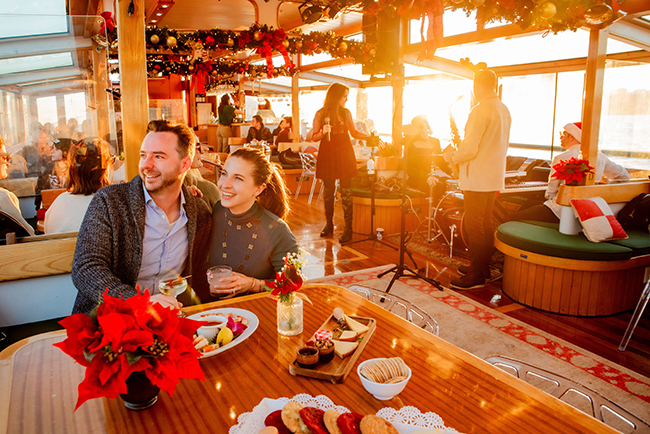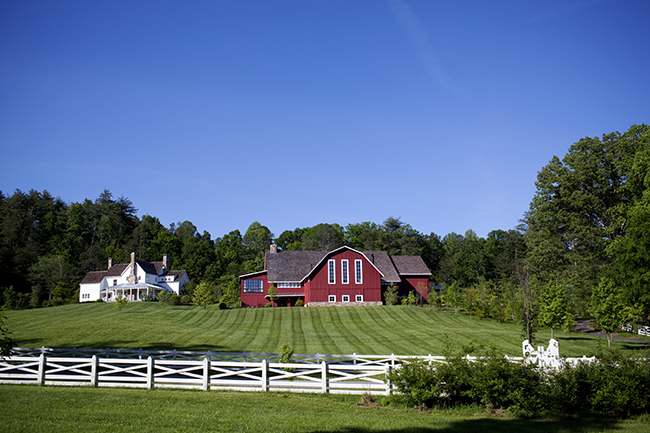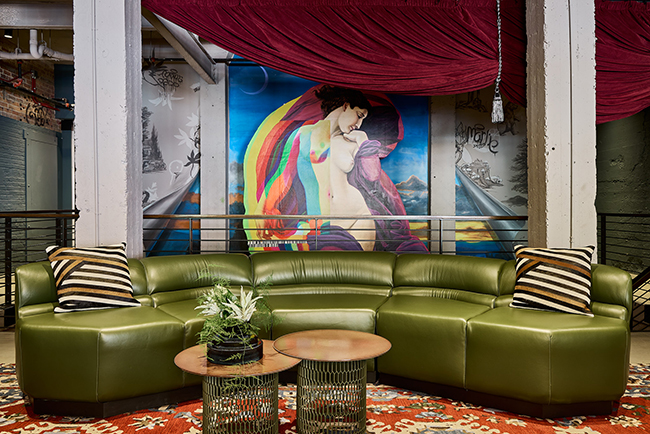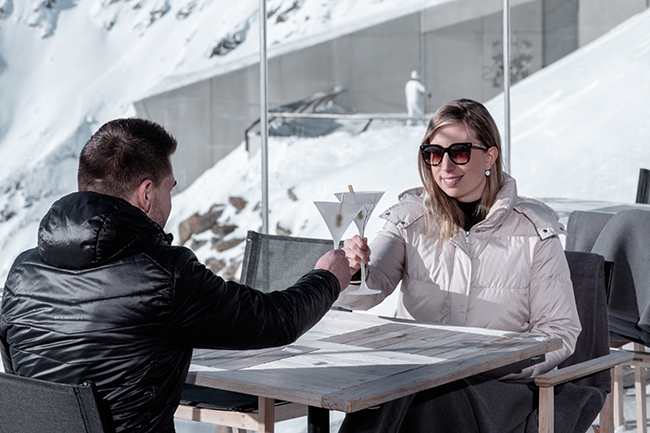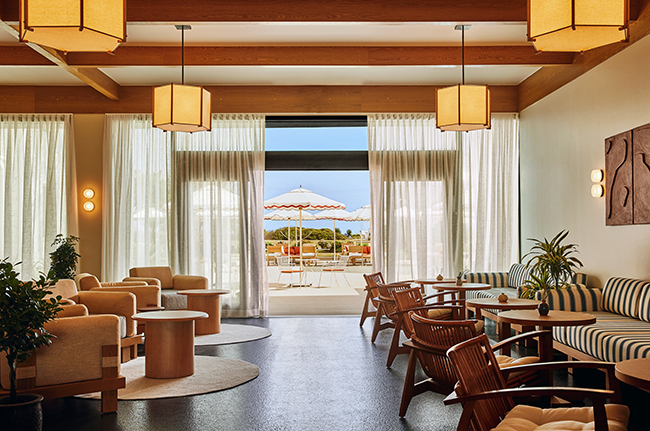When in Rome
09 Nov 2016
Come along on a tour through Italy to discover ancient ruins, great food and new friends
By CATHERINE KIMREY BREEDEN » Photos by SANDY AYCOCK

"Would you walk a mile for an airline flight?" begins an article in the September 29 Wall Street Journal―an article that exposes the long distances that passengers must navigate between concourses in major airports like Philadelphia, Miami, and Atlanta.
"Absolutely. I just wish that I'd had enough time to walk," is my answer. Because my recent trip to Italy got off to a rough start when our flight from Wilmington was delayed, giving my sister Janice and I a mere 10 minutes to run―RUN!―from one end of Philadelphia International Airport to the other. As the plane's door was closing, I tripped and fractured my shoulder.
Long story short: We landed at Rome's Leonardo da Vinci Airport a day late, with my left arm in a sling, but we still had a wonderful time. We met family members and friends who had arrived on time; then hooked up with fellow travelers, who quickly became new friends with whom we would spend the next seven days with touring the Eternal City, Capri, and the Amalfi Coast.
I'd been to Italy when I was 22, more years ago than I like to admit, and although I've changed in essential ways over the decades, Italy has changed far less. It still holds the same mysteries left behind by the ancient Romans.
Mysteries like how artisans of old managed to build the magnificently engineered four-story tall Colosseum 2000 years ago, in the days before computer-aided design or electronic lifting equipment could be imagined, much less implemented. One-third of the structure still exists, allowing visitors to marvel at the genius that was required to conceive of, and execute, three massive concentric circles of concrete and stone enclosing an oval-shaped arena. Built by slaves during the peak of the Roman Empire, the Colosseum functioned much like a modern-day sports stadium, as a center for public entertainment. But rather than celebrating with the Panthers when they make a touchdown, or applauding when the Hornets hit a three-point shot, the 50,000 spectators inside the amphitheater cheered as gladiators fought to their deaths.
Also impossible to imagine are the multiple mysteries hidden within the remains of Pompeii, the old Roman commercial center and seaport that was buried when Mount Vesuvius erupted in A.D. 79. A 30-foot blanket of hot volcanic ash and pumice stone covered the city, preserving its shops, houses, and paved streets. These artifacts, 140 miles south of Rome, remained undiscovered until 1599. Now partially excavated, they afford insight into first-century daily life. An interesting takeaway is evidence that "keeping-up-with the-Joneses" is an age-old practice, not a modern phenomenon: still existing after 2000 years are trompe l'oeil murals of plants and urns that residents of Pompeii painted on their interior walls to trick passers-by into believing that their courtyards were large.
Despite the damage that it wreaked long ago, Mount Vesuvius still smolders and poses a threat. We caught glimpses of this powerful volcano from various vantage points during our journey, including as we traveled from Rome to Naples. During that leg of the trip we covered the same terrain―albeit in the opposite direction―that my father and thousands of other brave soldiers had marched through when they headed north from Sicily to Germany during World War II. As a result, my sisters and I became nostalgic, reflecting upon the differing circumstances of the time that our father had spent, and that we were now spending, in Italy―the horrors of war juxtaposed against the pleasures of vacation. Detouring down memory lane, we wished that we had been more curious about his service throughout Europe, when he was still around to share his experiences. We recalled that he had once enjoyed a Christmas meal with an Italian family, and we wondered if he had always insisted that olives be included on our holiday table because he learned to love them there.
Which brings us to Italian food, starting with caprese salad―a dish that we were frequently served on this trip. Yes, I know that the Italian flag consists of three tricolor panels―green, white, and red―but is that any reason to have a salad to match: delicate green basil leaves, creamy white balls of buffalo milk mozzarella, and fresh slices of red tomatoes? Perhaps I'm prejudiced (I'm not a fan of mozzarella unless it's on pizza), but I could have done without all the caprese. Maybe that is one of the few disadvantages of taking a tour, even a small group tour, because many of the meals are included and the menus are by necessity pre-selected by the tour director. And yes, I do know that you can't please all of the people all of the time.
On the other hand, we did have some really fine food, and we did "wine our way" through Italy. One of the many advantages of taking a tour is that the local wines are usually generously poured with lunch and dinner.
In Sorrento, known as "the land of mermaids" because local legend has it that here is where Ulysses heard the bewitching songs of the sirens, I enjoyed the best meal of the week. At L'Antica Trattoria, a charming, flower-filled, sun-drenched open-air restaurant, I devoured a plate full of mouth-watering homemade seafood linguini with clams and mussels sauced in olive oil. That was after Janice and I had shared a huge, puffy fried zucchini blossom filled with creamy ricotta cheese and dressed with a red vinegar sauce. Dessert followed: a crispy cannoli shell filled with sweet pale yellow lemon-flavored cream, sitting in a pool of limoncello-flavored sauce, surrounded by fresh juicy blackberries, fat green grapes, luscious red cherries, and glistening sliced apples. Multi buono!
After that divine meal, our next stop was Positano, on the Amalfi Coast, where we spent two nights in a quaint hotel snuggled into the side of a cliff that overlooked the sparkling cobalt-colored waters of the Mediterranean Sea. Although it was challenging to traverse the sharply angled, multi-level, twisting and terraced steps that curved back and forth on themselves leading to our rooms, the effort was worth it. From our windows we could see hundreds of boats and yachts anchored so far below that even in daylight they looked like tiny twinkling lights flung out onto a brilliant blue carpet.
After leaving Positano we traveled to the fabled Pompeii and explored its many wonders. From there we boarded a high-speed train and circled back to Rome where we enjoyed a private tour of the Vatican Museum. Without the usual crowds around, we had the luxury of marveling leisurely at Michelangelo's masterpiece, the frescoed ceiling of the Sistine Chapel. How one of the greatest artists who ever lived created this magnificent Renaissance work of art depicting colorful scenes from the Book of Genesis, was yet another mystery left to ponder as our journey ended.



